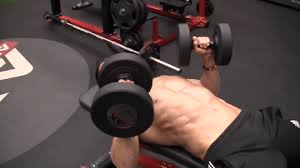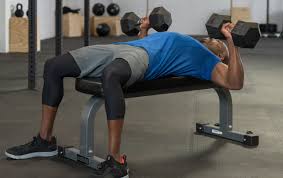Blog
2021-05-18
The oblique bench press presses against the chest and shoulders harder than a standard exercise, building muscle strength and hoping that you can lift more when doing a standard bench press. Tilt the stool 30 to 45 degrees, then place your feet flat on the floor and your back on the stool. With your palms facing forward, raise the dumbbells to chest height. Breathe and lift the dumbbells until your arms are fully extended and use your chest muscles to power the movement. Don't let the dumbbells touch. Pause at the top for a second, then slowly return it to its original position as you inhale.
If the tilting bench press is aimed at the top of the chest, you can expect the falling bench press to hit the lower chest muscles harder, and you may also find that this variation allows you to lift more weight while falling than if you were lying flat. Or tilt press. Set the bench at a 45 degree Angle and sit on the top of the ramp. Lean back (carefully) and raise the dumbbells to your chest. Slowly lift the weight straight up and place it back on the chest. The natural tendency is to move the weight back to the top of your head as you lift, so concentrate on avoiding this. The first time you try this, it's worth someone checking your form.
If you use dumbbells instead of barbells to calm a power imbalance in your body, alternating is an exercise you should be familiar with. The form is the same as a standard dumbbell bench press, except that you lift one weight at a time and hold the other weight in front of your chest. The effect is to isolate each side of the body more effectively than the standard version of moving. Start on the weaker side and you will soon see that a weightlifting session is much more challenging.
By holding the dumbbells in the hammer handle (palms facing each other), you're putting extra strain on your triceps compared to the standard handle for bench presses. You can do this by using a flat bench or setting it to incline, the latter to focus more on the muscles of the upper chest.
Grasp the dumbbells with a hammer, hold them high on your chest, and press them up until your arms are fully extended. Pause at the top and slowly return the weight to its original position.

Before starting the press, you need to prepare the weight. Ideally, once you're already on the bench, your friend will give you the weight. However, this is impractical. If you are using lightweight weights, the best option is to lift them off the floor onto your lap. Grasp each dumbbell firmly, then squeeze your shoulder blade bone together. From there, lift one knee and push the dumbbells toward your shoulder. Then, lift the other knee. (Be careful not to push the dumbbells too hard, or you risk hitting your head.) When you push the last dumbbell up, put it back on the bench. You should start with two dumbbells above your chest with your arms fully extended.
With your back on the bench, you want to squeeze the shoulder blade bone together. Also, make sure your feet are actively pressing into the floor. Doing so will help you absorb more muscle in your body, which will help lift the muscle. The back muscles are thought to be the basis of this lift. By squeezing the shoulder cap bones together, you can tighten your back and absorb these muscles. As you pull the weight down, you will feel the tension of the lat, as if the spring is ready to explode upwards.
Tip: The elbow should be located directly under the wrist, as this will help keep the shoulder joint incorrect position and allow for maximum back tension.
Keep your elbows at a 45-degree Angle and start losing weight. Avoid letting your arms swing in a tight path. Assume that the centerline of the dumbbell handle is in a straight line, and your goal is to keep it on that line. Lower the weight until both dumbbells are in your chest. At the bottom of the press, the weight should be slightly outside the torso. In addition, the shoulder blade bone is retracted and pressed down (down toward the hip) to help maintain stability in the upper back.
Tip: Consider stretching yourself deeper into the bench and pulling the dumbbells at you.
With your back tight and the weight at chest level, push the dumbbells up to your chest. Be sure to bend elbows at 45 degrees throughout the lift to maintain a proper compression mechanism.
Tip: Screw your feet into the floor. This extra leg contact will help you carry more weight, especially when you lift heavier dumbbells.

Request a Quote
Request a Quote